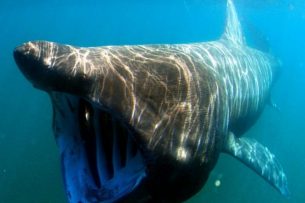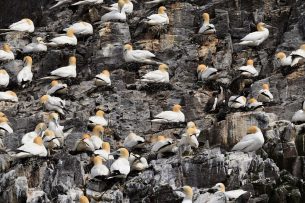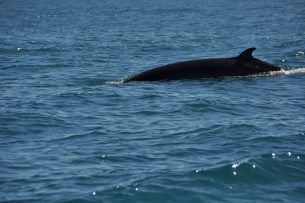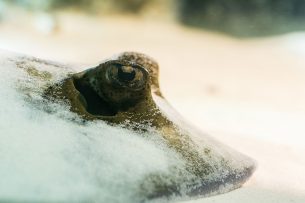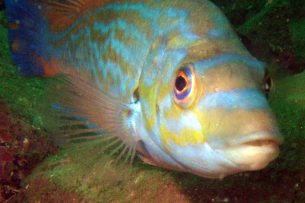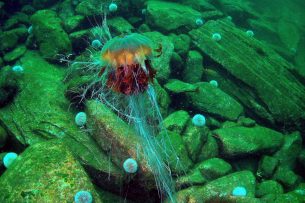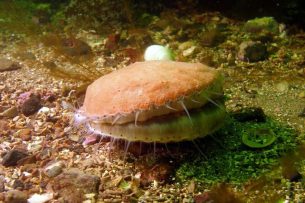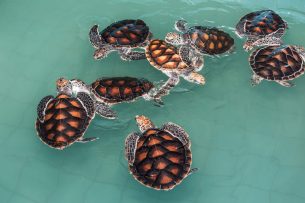Science and Data
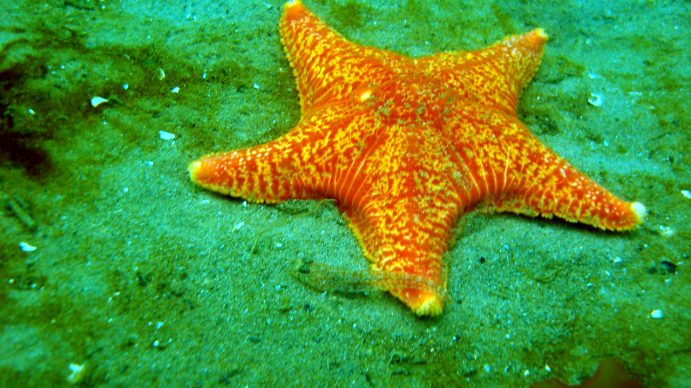
To be able to answer questions about an ecosystem, habitat or species, data must be gathered through some method of surveying or testing. This could be an official scientific process as part of the designation or management of a protected area, it could be regular monitoring of the local area by a community group or it could be any member of the public keen to become involved in citizen science. Often, a monitoring programme will encompass all of these.
Tapping into local knowledge and skills to better understand an area makes sense and across Scotland we are already seeing local community groups getting involved, in many different ways, in the collection of information and data from our seas.
In 2014, for example, community members from Wester Ross marine protected area got together with Scottish Wildlife Trust (SWT), Fauna & Flora International (FFI) and Scottish Natural Heritage (SNH) to organise a set of drop-down camera surveys and establish the further presence of maerl, a Priority Marine Feature for the site. More maerl was mapped and this influenced the management of the site in the upcoming consultations.
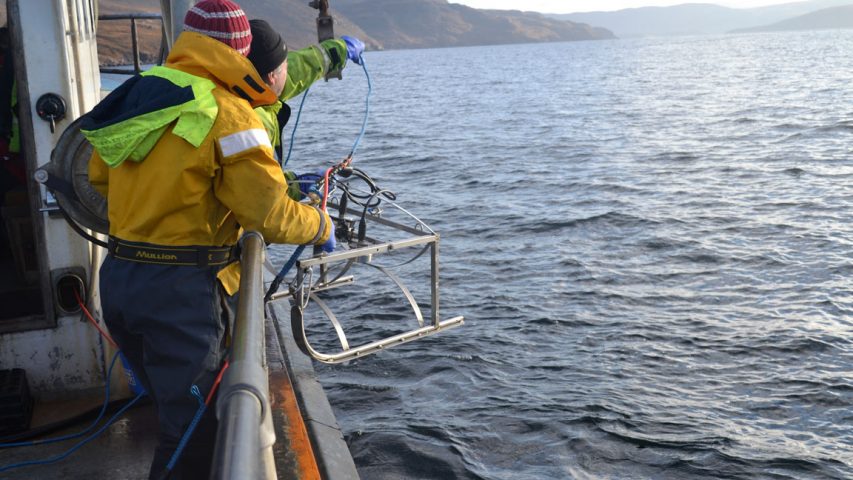
Wester Ross MPA maerl survey © Scottish Wildlife Trust
As another example, COAST have worked alongside University researchers and students for some years, to look into how the No-Take Zone has impacted upon the seabed and the species present there. Dr Leigh Howarth, who completed his PhD at York University, and is now a researcher at Bangor University, spent many summers on Arran leading a team of researchers investigating the effects of the Lamlash Bay NTZ designation. Using a variety of survey methods, the team found that scallop numbers have soared within the reserve, and lobsters have more than doubled in number and size.
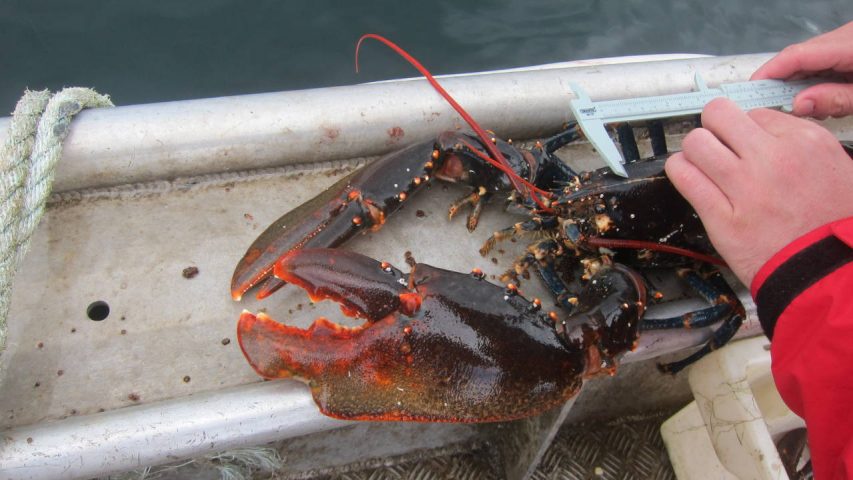
Measuring a lobster © Bryce Stewart
Monitoring
With regard to the responsibility for the monitoring of MPAs in the UK, this is dual and is held across both the Joint Nature Conservation Committee (JNCC) and SNH. JNCC leads on monitoring MPAs in UK offshore waters and, here in Scotland, SNH is responsible for monitoring MPAs in our inshore waters.
Marine Scotland, JNCC and SNH have developed a Scottish MPA monitoring strategy, which provides detail on monitoring methods, collaborative working, current monitoring and a two year forward look for MPA monitoring in Scottish waters.
SNH and FFI are developing an exciting community-led participatory inshore monitoring initiative, which will involve all of the community groups which currently make up the Coastal Communities Network, as well as many others. This initiative hopes to invest national resources and skills development into local coastal communities interested in helping to monitor the sites that are important to them.
[wpmem_logged_in] Representatives from many of the groups attended an initial IPM workshop in November 2017 – the discussions and outcomes can be seen in the report below (full and summary versions).
IPM Workshop Report Final.docx IPM summary Final.pdf [/wpmem_logged_in]
Surveying examples from elsewhere in the UK
In 2008, in Lyme Bay (off the coast of Devon and Dorset in southern England) some 60 square miles of sea were closed to scallop dredging and bottom trawling, to protect the rich reef habitats. Now, almost ten years later, institutions are working together to gather long-term monitoring data and record changes in fish and shellfish populations, to test whether management is indeed bringing life back to this area of sea. The video below details the monitoring project the reserve is working on with Plymouth University, led by the Blue Marine Foundation.
Scotland is a fantastic place for marine and coastal wildlife watching and recording – full of birds, otters, whales, dolphins – even turtles and sharks . Of course we want to enjoy the beauty of the natural world around us – photograph it, record it, and just generally bask in its glory! However, it’s important to also be aware of the limits to our wildlife watching activities and to seek to prevent any negative impacts we could have.
SNH has produced a Wildlife Watching Code and provided guidance on best practice. Their guidance also includes information on reporting stranded animals and highlights a number of organisations and initiatives where you can feed in any data that you collect.
We’ve included this below, and have also added in some additional schemes that may be of interest, if you’d like to record the wildlife that you enjoy while out around the coast.
SNH Scottish Wildlife Watching Code SNH Guide to Best Practice for Watching Wildlife
There are various volunteer surveys or citizen science schemes that individuals can join in with and learn from – some of these simply ask for records of species sightings to be submitted (see the Recording Schemes info box below) and some are looking for participants to gather data.
The Marine Conservation Society (MCS) run coastal and in-water volunteer survey schemes for divers and non-divers, Sea Watch Foundation involve the public in monitoring of Cetaceans; and the Hebridean Whale and Dolphin Trust and the Whale and Dolphin Conservation Society (WDCS) offer volunteer survey opportunities.
If you are looking for specific advice on marine or coastal surveying, why not ask other members in the network forums?
Seashore Wildlife
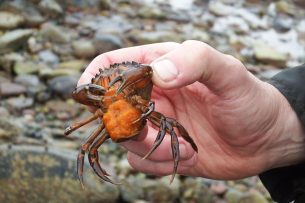
Image © COAST
visit Porcupine Marine Natural History Society and Capturing Our Coast
[wpmem_logged_in]
Info Hub+
Particularly since the designation of Scotland’s MPAs, the need to rethink the ways in which we collect scientific information to monitor inshore waters and to contribute to management processes has become increasingly significant. At present there are constraints (economic and structural) that limit communities in contributing to the evidence base, collecting information in a way that can be relevant to decision makers, and accessing the range of information that already exists – this in turn inhibits the ability of communities to engage effectively in consultation and other processes that can affect marine management.
As mentioned above, the groups which make up the Coastal Communities Network are currently working with SNH to develop a national-scale participatory monitoring initiative – with the aim that this will enable local communities across Scotland to have better access to the information and resources needed to underpin the promotion of effective, long-term management of Scotland’s inshore waters. For more information, read the concept note below.
Community-led Inshore Monitoring, Concept Note (FFI_SNH)[/wpmem_logged_in]
